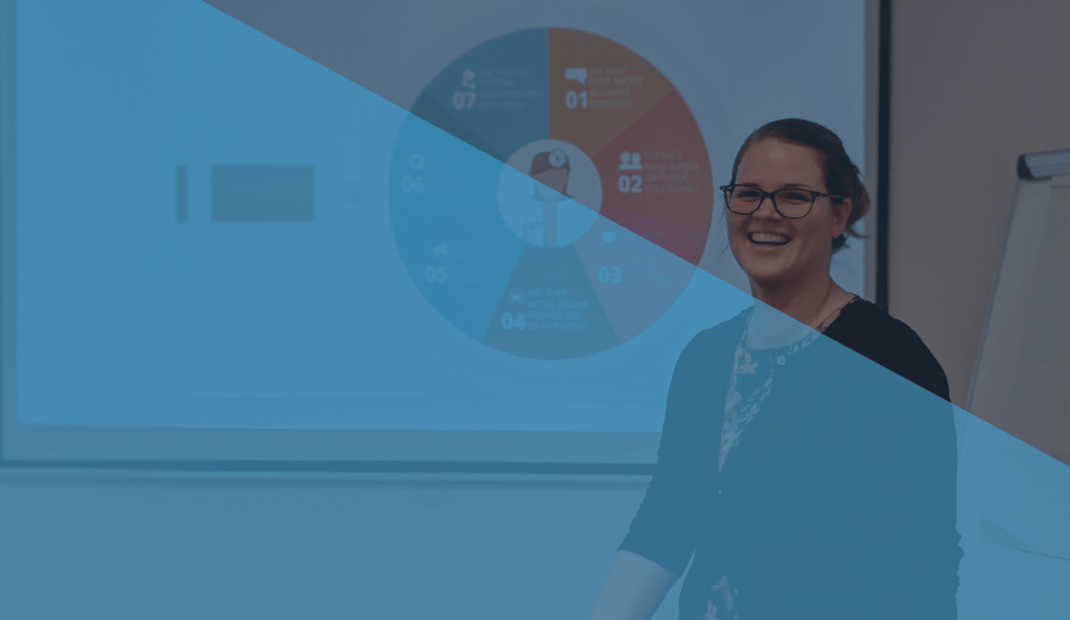Pharmaceutical and healthcare companies vary widely in their level of comfort with digital means of communication. Some, such as those featured in our annual Healthcare Engagement Strategy Awards, have used digital make a great different to patient care, or to revolutionise interactions with healthcare professionals (HCPs). Others are still reticent to begin engaging online, and it is also important to note that different areas of the same business may be at different phases of the journey. Here we map out what a typical journey to digital excellence may look like, and give advice for smoothing the way with Creation Pinpoint.
Phase 1: Understanding the importance of digital, and early explorations
Do you think that you should be “doing digital because everyone else is” but are unsure of where, or how to start? Are you concerned that by opening up online channels of communication, you will leave your company vulnerable to unhelpful comments, or cause a deluge of adverse event reports? Or are you simply sceptical that digital can make a real difference to your bottom line?
Firstly, it is important not to jump in with an ill-planned website or Facebook page, merely to establish some form of online presence. Whilst digital means of communication can be more cost effective than traditional media, setting up and maintaining websites or social media accounts is not cheap, and mistakes can be very expensive.
The good news is that the nightmare scenarios imagined by many pharmaceutical companies regarding digital have for the most part not become realities, and careful planning can prevent issues with adverse event reports and breaches of regulatory compliance. Read more about this here.
As for the usefulness of digital, it may be true that the impact of digital campaigns can be more difficult to quantify in terms of financial impact. How can the effect of a comment on a Facebook page on the company’s bottom line be gauged? However, it cannot be denied that online activities do affect how a company is perceived, and therefore the performance of stocks and the suchlike (see here for an example of how negative comments made online led to a 20% decrease in a company’s share price – this is a situation that can be easily avoided when digital engagement is carried out well) and that Healthcare Professionals (HCPs), who are among the primary customers of pharmaceutical companies, are increasingly active online. Furthermore, it is possible to easily track the performance of digital campaigns in ways not possible with traditional media, and to make adjustments quickly.
What you can do:
- Get expert advice if you are unsure as to whether a digital campaign is required
- Plan strategically – don’t spend on fancy websites or clever gimmicks before you know how digital fits with your overall strategy, and what capabilities there are in your department
- Consider using a digital behaviour monitoring tool (such as Creation Pinpoint) to perform a landscape analysis that can inform the design and set-up of your digital assets, so they can be fit-for-purpose right from the start. For example, if your study reveals that most doctors interested in your product are Spanish-speaking, you should ensure you commission a range of good quality Spanish-language assets to support the product
Phase 2: Harnessing the power of social media
Once early explorations into digital media have been made, the next stage is usually to look at monitoring the performance of digital campaigns, and into making these fully flexible. Social media monitoring is increasingly familiar to pharmaceutical companies, and refers to methods of analysing conversations taking place on social media. By using social media monitoring tools, not only can you understand the impact of any online or offline campaigns on what HCPs say, but you can identify the hot topics of discussion, and the individuals who are most active (see the next section for more on the importance of Digital Opinion Leaders). This knowledge can then help you to adapt your campaigns.
Social media monitoring is usually carried out with a proprietary tool such as Brandwatch or Radian6, or with a specialist HCP monitoring tool such as Creation Pinpoint, and is usually outsourced to an agency or consultancy, although some pharmaceutical companies prefer to carry out monitoring in-house.
What you can do:
- Set aside financial and human resources for monitoring any social media accounts that your company has, or is associated with. Adding monitoring tasks on to the responsibilities of an already busy Brand Manager or Digital Officer is not always the answer. Training and proper governance processes may need to be put in place.
- Choose a social media monitoring tool that meets your needs. For example, Creation Pinpoint focuses on the conversations taking place between HCPs, removing noise and reducing the risk often associated with pharmaceutical companies monitoring consumer activity online.
- Make sure you act on insights. Social media monitoring is useless if it amounts to reports that are kept on a bookshelf, and a large part of the advantage of digital campaigns (their flexibility) is lost if they are never reviewed or updated.
Phase 3: Engagement
If you have well-planned digital activities and are confident with monitoring the online space in relation to your products or areas of interest to ensure your campaigns are compliant and relevant, what’s next? True engagement with key stakeholders. This involves focusing your monitoring efforts on Digital Opinion Leaders (DOLs).
What you can do:
- Understand the topic area better by reading Daniel Ghinn’s free e-book, Activating Digital Opinion Leaders.
- Make sure you are able to reliably identify DOLs. This first, crucial step is made easy with Creation Pinpoint, which analyses only HCP conversations, and which offers information on HCPs at the click of a mouse
- Remember that DOLs are real people, and that their online and offline activities may link up. Don’t neglect traditional stakeholder engagement activities including the work of your existing reps or MSLs.

